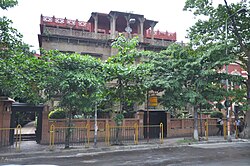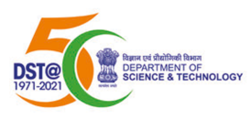 | |
 Unified campus of Bose Institute | |
| Established | November 30, 1917 |
|---|---|
| Research type | Interdisciplinary research |
Field of research |
|
| Director | Kaustuv Sanyal |
| Location | Kolkata, West Bengal, India 22°34′47″N88°14′30″E / 22.579689°N 88.2417152°E |
| Campus | EN Block, Sector V, Bidhannagar, Kolkata, West Bengal 700091 |
Founder | Jagadish Chandra Bose |
Operating agency | Department of Science and Technology (India), Government of India |
| Website | www |
Bose Institute (or Basu Bigyan Mandir) is a premier public research institute of India for biological sciences and also one of its oldest. [1] The Bose Institute Kolkata is a Tier 1 Natural Science Research Institute in India, sharing the podium with India's top natural science research institutes viz., Indian Institute of Science Education and Research, IISc Bengaluru, NCBS Bengaluru and IIT Bombay. The institute was established on 30 November 1917 by Acharya Sir Jagdish Chandra Bose, the father of modern scientific research in the Indian subcontinent. Bose was its director for the first twenty years till his demise. Debendra Mohan Bose, who succeeded the Nobel laureate Sir CV Raman as Palit Professor of Physics at the University of Calcutta, was the director of Bose Institute for the next thirty years. The institute pioneered the concept of interdisciplinary research in Asia and India in sync with global trends.


